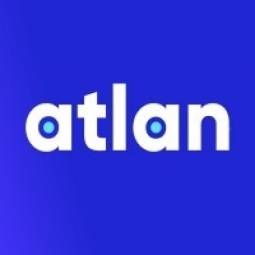Technology Category
- Cybersecurity & Privacy - Identity & Authentication Management
- Cybersecurity & Privacy - Security Compliance
Applicable Industries
- Buildings
- Cement
Applicable Functions
- Procurement
- Quality Assurance
Use Cases
- Leasing Finance Automation
- Time Sensitive Networking
Services
- Data Science Services
About The Customer
Tide is a mobile-first financial platform based in the UK, offering fast, intuitive service to small business customers. Data is crucial to Tide, having supported its incredible growth to now nearly 500,000 customers in just eight years. In financial services, data acutely presents risk and demands careful and fastidious protection of sensitive financial information. These risks only increase as enforcement of GDPR increases, with nine-figure fines levied against offending firms in just the last few years. Tide's journey toward data maturity was a daunting one, with the data platform team originally consisting of just two employees. In just four years, the function grew to a team of 67 across data engineering, analytics, data science, and governance.
The Challenge
Tide, a UK-based digital bank with nearly 500,000 small business customers, faced a significant challenge in improving their compliance with GDPR’s Right to Erasure, also known as the “Right to be forgotten”. The bank's data and legal teams needed to define personally identifiable information and propagate those definitions across their data estate. The process of compliance was difficult and time-consuming, involving manual effort to find and delete data that persisted in secondary systems. Complicating this challenge was a lack of shared definitions of personal data, with differing opinions across organizations from Legal to IT. As Tide's technology stack and architecture grew more complicated, new products and services were introduced, and customers increased over time, the compliance process took only more time and effort. Automating this process became a priority.
The Solution
Tide adopted Atlan as their metadata platform to improve data discovery, visibility, and governance. Atlan was integrated with their data stack, capturing all relevant metadata. With Atlan, both technical and non-technical users could find the right data asset for their needs, quickly and intuitively. Using Atlan’s data glossary and metrics, Tide began to enjoy better context surrounding their data domains, which set the stage for standardizing classifications of sensitive data like personally identifiable information. Atlan’s automated lineage added transparency so the team could understand where data came from, how it transformed throughout the data pipeline, and where it was ultimately consumed. Tide used Atlan Playbooks (rule-based bulk automations) to automatically identify, tag, and secure personal data, turning a 50-day manual process into mere hours of work. The team is now building a microservices-based orchestrator to handle requests from customers about their personal data, which will be enhanced to anonymize data in accordance with GDPR standards for de-identification and Tide’s data retention obligations as a regulated business.
Operational Impact
Quantitative Benefit

Case Study missing?
Start adding your own!
Register with your work email and create a new case study profile for your business.
Related Case Studies.

Case Study
System 800xA at Indian Cement Plants
Chettinad Cement recognized that further efficiencies could be achieved in its cement manufacturing process. It looked to investing in comprehensive operational and control technologies to manage and derive productivity and energy efficiency gains from the assets on Line 2, their second plant in India.

Case Study
Energy Saving & Power Monitoring System
Recently a university in Taiwan was experiencing dramatic power usage increases due to its growing number of campus buildings and students. Aiming to analyze their power consumption and increase their power efficiency across 52 buildings, the university wanted to build a power management system utilizing web-based hardware and software. With these goals in mind, they contacted Advantech to help them develop their system and provide them with the means to save energy in the years to come.

Case Study
Intelligent Building Automation System and Energy Saving Solution
One of the most difficult problems facing the world is conserving energy in buildings. However, it is not easy to have a cost-effective solution to reduce energy usage in a building. One solution for saving energy is to implement an intelligent building automation system (BAS) which can be controlled according to its schedule. In Indonesia a large university with a five floor building and 22 classrooms wanted to save the amount of energy being used.

Case Study
Powering Smart Home Automation solutions with IoT for Energy conservation
Many industry leaders that offer Smart Energy Management products & solutions face challenges including:How to build a scalable platform that can automatically scale-up to on-board ‘n’ number of Smart home devicesData security, solution availability, and reliability are the other critical factors to deal withHow to create a robust common IoT platform that handles any kind of smart devicesHow to enable data management capabilities that would help in intelligent decision-making

Case Study
Protecting a Stadium from Hazardous Materials Using IoT2cell's Mobility Platform
There was a need for higher security at the AT&T Stadium during the NFL draft. There was a need to ensure that nuclear radiation material was not smuggled inside the stadium. Hazmat materials could often be missed in a standard checkpoint when gaining entry into a stadium.








